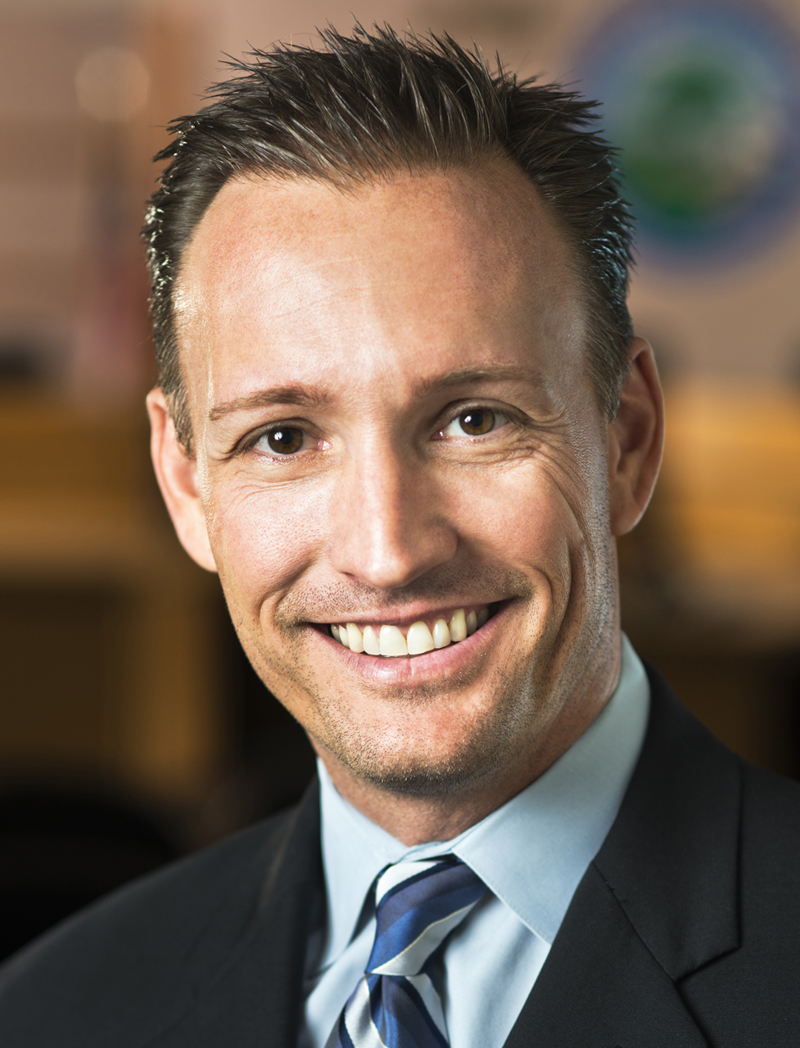President of CCMF, Ken Striplin, became a City Manager for the City of Santa Clarita in 2012. He has been working with the City of Santa Clarita since 1996, playing an integral role in both the organizational and fiscal aspects of the city’s success. He has continued this work at CCMF, and has high hopes for the organization’s goals and future. We asked him to talk a little more about his career, as well as the successes and challenges that CCMF is facing today.
 Why did you get involved in CCMF?
Why did you get involved in CCMF?
I got involved in CCMF as an assistant city manager. I wanted to be a city manager. So my goal was to be a city manager, and I felt that there was really no better place or organization that was focused on the development and promotion of excellence in the profession, so that was the draw for me. I felt CCMF really was a leading organization in our profession, and led by a bunch of people who had a lot of experience and really good reputations as being leading city managers.
Why is CCMF important?
CCMF is important because it’s a resource for all stages of the city manager’s career. We really look at not only ‘are we creating opportunities for people to gain exposure and experience in the profession’, to providing scholarships and training opportunities for both mid–level and later in the career professionals, we provide a number of resources that’s not just on the training and professional side, but the difference is CCMF also looks at the person that is the city manager as opposed to just a profession.
As President, what are some of your goals for CCMF?
I think in terms of the organization, my goal is to continue a long tradition of success for an organization that serves a very specific role. I think going forward, we want to make sure that we’re providing new and relevant opportunities for city managers that are at different stages, making sure that we’re addressing those different stages of the career, continue to promote and provide exposure for future city managers, and create a place where city managers can get counseling and advice as individuals as they go through their careers.
Who in your career influenced you to become a City Manager?
I’ve worked for two different city managers in my career. When I first got into professional workforce, a manager named George Carvalho, who was a longtime city manager, and a great mentor. I also worked for my predecessor here at the City of Santa Clarita, and that’s Ken Pulskamp. Ken was here for about 25 years, spent 10 years as a city manager, and was another integral mentor for me. Ken now serves as our Executive Director at CCMF and continues to give back to the city management profession.
How will your management at CCMF help all city management improve across the state of California?
We have a board that consists of both public and private sector representatives. And I think as a board, our responsibility and our goals are to promote and encourage excellence in city management across all 480 plus California cities and towns. So I think for us, we’re always looking at how do we create relevant training programs? How do we stay on top of the trends in the profession and put together resources, publish articles? We give different scholarship opportunities to continue to promote excellence, ethics and professionalism in city management.
What do you enjoy most about being a City Manager in Santa Clarita?
I love Santa Clarita. I’ve been here for almost 24 years, so I’ve spent my career here. The thing I love about Santa Clarita is it’s gone from a very small organization, smaller community, to a larger, more complex organization. And I love the fact that I’ve had the opportunity to have an influence, be part of such a growing dynamic and really excellent organization.
What are the greatest challenges of City Managers in California today?
As city managers, within our cities, within our communities, we all have different issues, but we all struggle with some of the same issues. I think as city managers it’s difficult, because we’re always trying to balance the needs and priorities of a very diverse population. And so, regardless of what the issues are, I think it’s a tough balancing act to trying to address and deal with all the needs from communities that are all different. People have different needs and different expectations, council members have different needs and different expectations, so I think our challenges as city managers, again, is to create this structured environment where we can be supportive, guiding, and provide professional guidance to our communities so that we drive them forward and deal with the tough issues that face California in general.
During the course of your career, what has changed the most in the city management profession?
The thing that I think that I’ve seen change the most is the relationship in many cases between the City Manager and the City Council. I think that what I’ve seen is more of an evolution of council members wanting to be more active in the overall management of cities. I think when I first came in, there was in many, many ways, clear lines between those, and I think now there’s a much more collaborative approach to how city managers lead committees with their council members co-leading as well. So how they share that relationship more is one of the biggest changes that I see.


